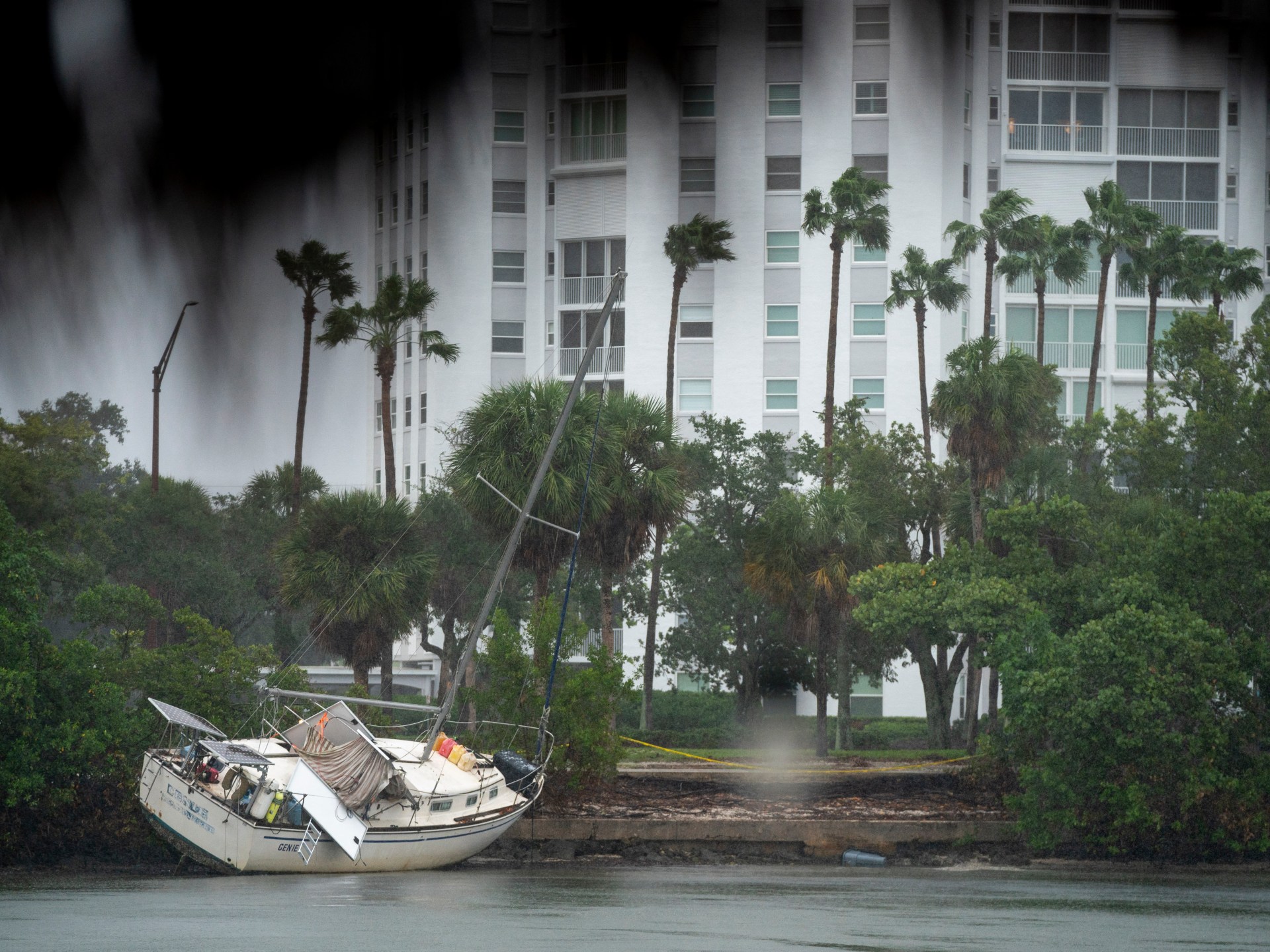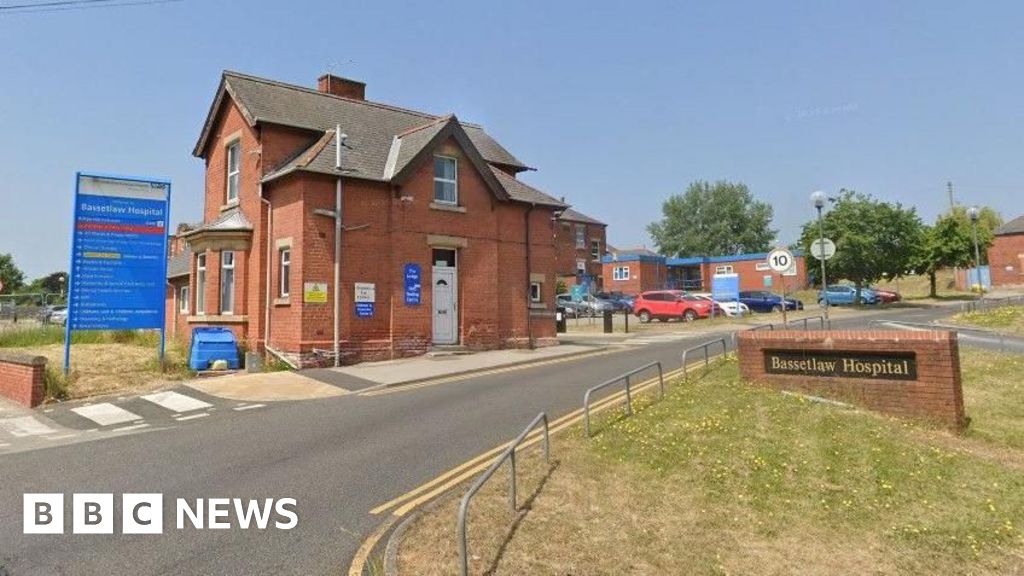
Takeaways from Hurricane Milton: The ‘fingerprints of climate change’ | Weather News
- Politics
- October 12, 2024
- No Comment
- 119
Florida residents are reeling after Hurricane Milton swept across the state with roaring rains and winds, killing at least 18 people, wrecking more than 100 buildings and causing mass power blackouts.
But as bad as the storm was, experts and local officials are relieved it wasn’t more catastrophic with Governor Ron DeSantis saying the state had avoided a “worst-case scenario”.
Here are key takeaways from the storm:
‘Explosive’ intensification
After emerging in the Gulf of Mexico, Milton exploded into one of the region’s fiercest ever hurricanes in four quick days. From Sunday to Monday, the storm’s wind speed surged from 97km/h (60mph) to 290km/h (180mph), among the strongest in decades.
“The storms you now get grow into monster extreme weather events rather quickly,” Susan Glickman with the CLEO Institute, a nonprofit dedicated to climate education and advocacy, told Al Jazeera. “They are unnatural disasters as compared to hurricanes that we’ve seen for decades.”
These supercharged modern hurricanes are also harder to prepare for. “Some people don’t have time to prepare, and then they just cause more damage,” she said.
To avoid Milton, Glickman evacuated from Belleair Beach on Florida’s west coast after her home was flooded by Hurricane Helene two weeks earlier. After relocating 16km (10 miles) inland, a falling tree crushed her car.
While meteorologists expected Milton to weaken before hitting Florida’s shores, they were ready for an “epic catastrophe”, spurring calls for more than seven million people to evacuate.

Weaker storm but stronger tornadoes
Thanks to what forecasters refer to as vertical wind shearing, Milton was disrupted by competing winds over the Gulf of Mexico in its final approach to Florida. As a result, by the time it made landfall, it had dropped from a Category 5 storm – the highest classification – to a Category 3 with maximum wind gusts of 195km/h (121mph).
That caused the storm surge – the rise in coastal water levels that can flood homes – to cap off at a lower-than-dreaded 4.5 metres (15ft) in Tampa Bay, the most vulnerable low-lying urban area in Milton’s path.
“The storm surge, which was so feared, didn’t happen because it [the storm] went a little south,” Glickman said.
[1/2] 5pm EDT: Preliminary post-landfall analysis of storm surge from Hurricane #Milton indicates peak water levels reached 5 to 10 feet above ground level between Siesta Key, FL and Ft. Myers Beach, FL, including Charlotte Harbor.
— NHC Storm Surge (@NHC_Surge) October 10, 2024
However, Milton did cause an unusual barrage of tornadoes, dozens of which were unleashed throughout the state. It was these violent twisters that caused some of the state’s worst carnage with one tornado in the eastern city of Fort Pierce killing at least five people in a retirement home.
“The tornadoes … were really kind of supercharged compared to the typical tornadoes you see in a hurricane environment,” Michael Brennan, director of the National Hurricane Center in the United States, told CNN. “They were longer living. They were more powerful. There were more of them.”
#Hurricane #Milton produced 35+ preliminary #tornado reports and 126 #tornado warnings. Here are your Top 5 most-prolific tornado-producing tropical cyclones. #Beryl already cracked the Top 5 earlier this year.
Hurricane Ivan 2004 (118 tornadoes)
Hurricane Beulah 1967 (115… pic.twitter.com/knI29bvm5q— Kathryn Prociv (@KathrynProciv) October 10, 2024
Billions in damage
On top of the lives lost, Milton knocked out power to more than three million people, shut down major international airports and ports, and created property damage that could cost insurers as much as $50bn, according to the credit rating agency Fitch.
US President Joe Biden said at a news conference on Friday that Milton and Helene highlight the need to harden the US energy grid.
Florida officials warned that recovery will be a long and gruelling process. In St Pete Beach, a barrier-island city, most houses are uninhabitable with no sewer or water service, according to Mayor Adrian Petrila.
The search for people stranded or missing in the storm continues with more than 6,500 national guard soldiers deployed to support the effort.

Climate change played a role
Milton was likely wetter and windier than past hurricanes due to weather trends shaped by global warming, according to experts.
A major factor, they said, is the ocean’s warming temperatures, which serve as turbo fuel for brewing storms in the Atlantic Ocean.
“All across the North Atlantic and especially the Gulf of Mexico, the temperatures are record-breaking right now,” Jennifer Francis, a senior scientist at the Woodwell Climate Research Center, told Al Jazeera. “And we know that heat in the ocean is the fuel that these storms feed off of. This extra energy makes [these storms] stronger. It makes them intensify more rapidly.”
Francis added that the warming water likely spurred heavier rainfall as Milton crashed into Florida, which recorded 457mm (18 inches) of precipitation in some inland areas, submerging vehicles.

According to a flash study published by researchers at World Weather Attribution, human-caused climate change can be blamed for boosting Milton’s rainfall 20 to 30 percent as well as for amplifying its winds by about 10 percent.
“The fingerprints of climate change and the climate crisis are very clear in these storms,” Francis said.
Storm of disinformation
As front-line workers raced to clear debris-ridden roads, restore power and find missing people, they also battled a flood of conspiracy theories about the hurricane and the federal response.
Among the false claims were that Milton had been geo-engineered with “frequency waves” or somehow directed to target areas where Republican Party supporters live as US voters prepare for the November 5 elections.
On social media, users shared AI-generated photos showing fake imagery of hurricane damage, including to Orlando’s Disney World.
Another discredited claim, echoed by former President Donald Trump, is that the Federal Emergency Management Agency (FEMA) redirected hurricane relief funds to house undocumented immigrants.
“We are seeing on social media the narrative around Democrats, AI-generated imagery of how FEMA are failing … fuelling a pretty hateful and impactful fire,” said Henry Ajder, an independent adviser on generative AI. “This makes it more difficult for these people to do their job in incredibly challenging circumstances.”
#Takeaways #Hurricane #Milton #fingerprints #climate #change #Weather #News









